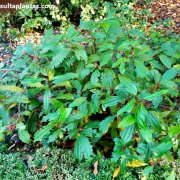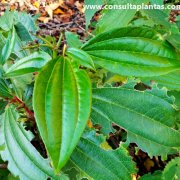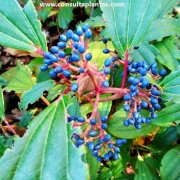Care of the shrub Viburnum davidii or David viburnum |
|
The genus Viburnum, family Adoxaceae, comprises 200 species of shrubs and trees native to the Northern Hemisphere, South America and the island of Java. Some species are: Viburnum suspensum, Viburnum rigidum, Viburnum rhytidophyllum, Viburnum opulus, Viburnum lantana, Viburnum davidii, Viburnum tinus, Viburnum tomentosum, Viburnum utile, Viburnum awabuki. Common name: David viburnum. This species is native to western China. They are slow-growing dioecious evergreen shrubs that reach 1.5 meters (4.9 feet) in height. The oval, leathery leaves are bright green and have well-marked veins. The small white flowers appear in flat flower heads. They bloom in spring. The decorative fruits are bright blue. David viburnum is used to form low hedges, cover undergrowth, on edges, along walls, as isolated specimens and in pots for patios and terraces. It's not recommended for hot climates such as the Mediterranean climate. Viburnum davidii grows in full sun (temperate climates) and semi-shade (warm climates) exposures; It also grows in shade but produces fewer flowers. Frost resistant up to -15 ºC (5 ºF). Does not like intense heat. The soil can be normal garden soil that is well drained and contains plenty of organic matter. Transplanting or planting is done in spring. Water regularly so that the substrate never dries out. Viburnum davidii does not resist drought. Fertilize with compost or manure in the fall. David viburnum does not usually need pruning due to their slow growth. Viburnum davidii can be attacked by aphids and mites if the heat is intense and by insects that devour the leaves. David viburnum is propagated from seeds sown in autumn in the nursery (germination is slow) and by cuttings in spring or summer. |
Images of the shrub Viburnum davidii or David viburnum |
Find plants
Viburnum davidii or David viburnum | Care and Growing
© 2025 FavThemes


